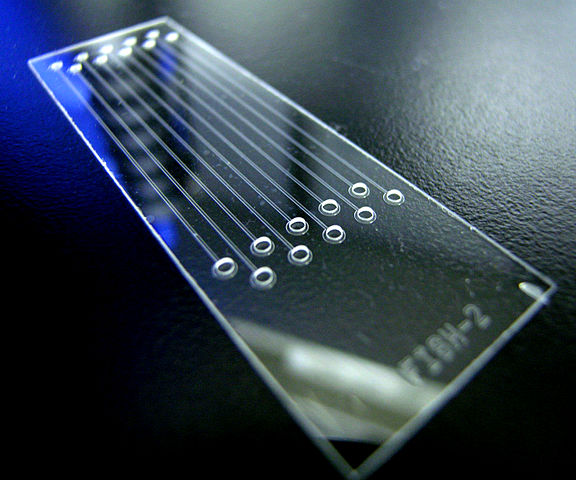Developments at the Wyss Institute, Harvard, have made a major step towards personalised medicines, but their research may even be leaping towards reducing the use of animals in science.
Probably the most prominent ethical concern over biomedical research among scientists – and the public – is the use of animals. One of the more uncomfortable points raised in defence of our often cute and furry cousins (and fish and worms and flies, etc.) is phylogenetic discrepancy – as relatively genetically similar we may be, a mouse is not a human. Developments in new drug discoveries are frequently shelved or even scrapped because the desired effect seen in other animals is not replicated in humans.
Overcoming this discrepancy is one of the motivations behind “organ-on-a-chip” technologies, whereby different human cell types are engineered into a structure resembling an organ. The aim is to generate several functional units which can summarize an organ’s function. The appeal of this approach is the specificity it affords while maintaining a valid environment for cells. Models using whole animals provide greater and more appropriate complexity than when cultured in vitro, however isolating individual responses becomes drastically more difficult 1. So organs-on-chips are something of a half-way point.
Disappointingly, the “chip” in this technology doesn’t result in the primordial cyborg I was hoping for. It stems from the photolithographic method that manufactures computer chips and when utilised by bioengineers it can create grooves and patterns at a scale relevant to living cells (nm to µm) 2. Advances in the field of microfluidics means that when these chips are integrated with sensors the flow and gradients of molecules can be highly controlled, and it is the combination of specific chip patterns with microfluidics that enables the generation of complex 3D tissue cultures 3.
Liver, kidney, intestine, lung, heart, muscle, fat, skin, blood vessels and nerves have been generated “on-chip” 4. But only recently at the Wyss Institute has bone marrow been on developed on-chip; and if you’re interested in the effects of drugs on the body, that’s quite important 5. Bone marrow is highly complex and can differentiate into numerous types of cells. The niches these cell types occupy are often dependent on the labyrinth microstructure of bone and the environmental gradients it creates, making it difficult to maintain (let alone create) in the lab. The interest to drug research is that bone marrow produces lymphocytes – a major part of the immune system – and a key player in understanding side-effects of drugs.
The pharmaceutical industry uses vast number of animals in research; but knowing human side-effects and complications long before clinical trials would drastically reduce this number. However, were these reductions to happen, organ-organ interactions also need to be investigated. Several groups are aiming for a “human-on-a-chip”, a system of multiple, tiny, functional organs which can mimic the physiological responses of a human 6. For this you need a valid circulatory system, you need lymphocytes, and you need bone marrow.
Edited by Debbie Nicol
References
- Ziolkowska K, et al. Microfluidic devices as tools for mimicking the in vivo environment. New J. Chem. 2011; 35:979–990
- Bhatia S, N & Ingber D, E. Microfluidic organs-on-chips. Nature Biotechnology. 2014; vol32, 8, 760-772
- Xiao, R.R. et al. Simultaneous generation of gradients with gradually changed slope in a microfluidic device for quantifying axon response. 2013. Anal. Chem. 85, 7842–7850.
- Ghasemmaghami, A, M et al. Biomimetic tissues on a chip for drug discovery. 2012. Drug Discov Today; 17 (3-4): 173-181
- Torisawa, Y. Bone marrow-on-a-chip replicates hematopoietic niche physiology in vitro. 2014, Nature Methods, 11, 663-669
- Luni, C., Serena, E., Elvassore, N. Human-on-chip for therapy development and fundamental science. 2014. Curr Opin Bioteh, 25, 45-50

